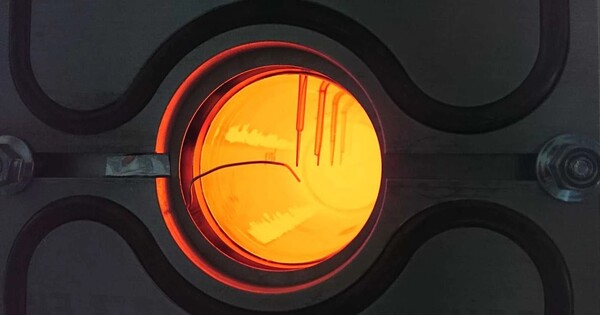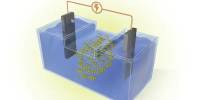Instead than utilizing fossil fuels to smelt steel and cook cement, Swiss researchers propose using solar heat. The proof-of-concept work, published on May 15 in the journal Device, uses synthetic quartz to capture solar energy at temperatures beyond 1,000°C (1,832°F), indicating the method’s potential for providing sustainable energy to carbon-intensive industry.
“To address climate change, we must decarbonize energy in general,” says corresponding author Emiliano Casati of ETH Zurich, Switzerland. “People tend to only think about electricity as energy, but in fact, about half of the energy is used in the form of heat.”
Glass, steel, cement, and ceramics are at the heart of contemporary society, used to make everything from automobile engines to skyscrapers. However, making these materials requires temperatures above 1,000°C and is significantly reliant on the use of fossil fuels for heat. These industries account for roughly 25% of worldwide energy use. Researchers investigated a clean-energy alternative based on solar receivers that use hundreds of sun-tracking mirrors to concentrate and create heat. However, this technique has difficulty successfully transmitting solar energy at temperatures beyond 1,000 degrees Celsius.
Previous research has only managed to demonstrate the thermal-trap effect up to 170°C (338°F). Our research showed that solar thermal trapping works not just at low temperatures, but well above 1,000°C. This is crucial to show its potential for real-world industrial applications.
Emiliano Casati
To boost the efficiency of solar receivers, Casati turned to semitransparent materials such as quartz, which can trap sunlight — a phenomenon called the thermal-trap effect. The team crafted a thermal-trapping device by attaching a synthetic quartz rod to an opaque silicon disk as an energy absorber. When they exposed the device to an energy flux equivalent to the light coming from 136 suns, the absorber plate reached 1,050°C (1,922°F), whereas the other end of the quartz rod remained at 600°C (1,112°F).
“Previous research has only managed to demonstrate the thermal-trap effect up to 170°C (338°F),” says Casati. “Our research showed that solar thermal trapping works not just at low temperatures, but well above 1,000°C. This is crucial to show its potential for real-world industrial applications.”
Fig: Scientists generate heat over 1,000 degrees Celsius with solar power instead of fossil fuel
The scientists used a heat transfer model to simulate the quartz’s thermal-trapping efficiency under various situations. The model demonstrated that thermal trapping reaches the target temperature at lower concentrations while maintaining performance, or at higher thermal efficiency for equal concentrations. A cutting-edge (unshielded) receiver, for example, has a 40% efficiency at 1,200°C and a 500-sun concentration. The receiver, protected with 300 mm of quartz, achieves 70% efficiency at the same temperature and concentration. To achieve equivalent performance, the unshielded receiver requires at least 1,000 suns of focus.
Casati and his colleagues are currently optimizing the thermal-trapping effect and looking into additional uses for the approach. So far, their findings have been positive. They were able to attain even greater temperatures by experimenting with different materials, such as fluids and gas. The scientists also discovered that the ability of these semitransparent materials to absorb light or radiation is not restricted to solar energy.
“Energy issue is a cornerstone to the survival of our society,” Casati elaborates. “Solar energy is easily accessible, and the technology is already available. To truly encourage industry adoption, we must demonstrate the economic viability and benefits of this technology at scale.”
















